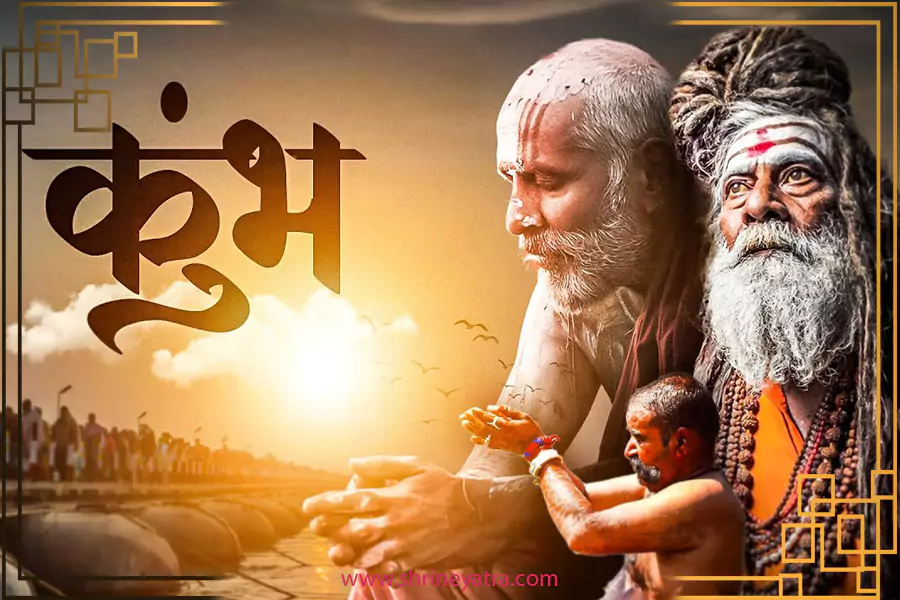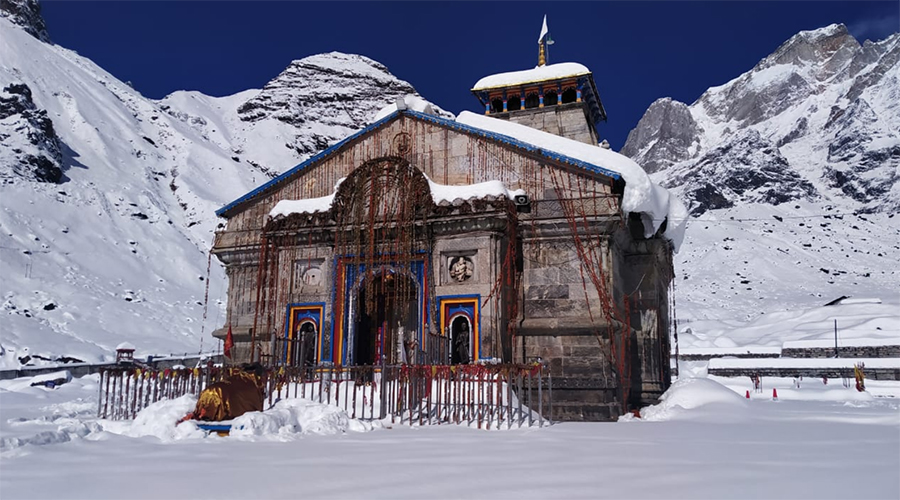History of Uttarakhand Char Dham Yatra

For centuries, devotees and pilgrims have visited the Char Dham pilgrimage sites of Badrinath, Kedarnath, Gangotri, and Yamunotri. All these places are located in the Garhwal Himalayas in Uttarakhand. Due to their tremendous religious and spiritual significance, these four pilgrimage places have become famous as the Char Dhams of Uttarakhand. The Chardham Yatra Package is a religious pilgrimage tour of all these four places. There are so many legends and stories around these Char Dham places in Uttarakhand. Let’s take a look at the historical roots that make Uttarakhand Char Dham Yatra one of the most popular pilgrimage destinations in India.
About Kedarnath Temple
Kedarnath Temple is famous since ancient times as one of the most sacred temples in Uttarakhand. It is one of the major Shiva temples in Uttarakhand. Kedarnath Temple is so sacred that it is included in the 12 major Jyotirlingas in India. No one knows who built the original temple of Kedarnath. But Hindu scriptures like the Skanda Purana mentions Kedarnath as the place where Lord Shiva released Goddess Ganga from his locks of hair. It can be said that Kedarnath Temple is one of the oldest temples in Uttarakhand.
Legends and history of Kedarnath Temple
- According to popular beliefs, the Pandava brothers built Kedarnath Temple. The great Hindu philosopher Adi Shankaracharya later rebuilt the temple during the 8th century.
- Another mythological story is that Nar and Narayan (two forms of Lord Vishnu) meditated for years in Badrikashram (Badrinath Temple). Lord Shiva was pleased by their devotion and agreed to stay permanently at Kedarnath in the form of a Jyotirlinga.
- The priests of Kedarnath are called purohits and are descendants of great sages. These sages have been worshipping the shiv linga at Kedarnath Temple since the mythological times.
- The entire region around Kedarnath Temple was under ice and snow for around 400 years. There were huge glaciers in this region from 1300 to 1900 AD. Scientists have pointed out the signs of moving glaciers in the rocks in Kedarnath Temple.
About Badrinath Temple
Badrinath Temple is the most easily accessible of all the Char Dham places in Uttarakhand. Lord Vishnu is the main deity of Badrinath Temple. He is worshipped in the form of Badrinarayan. The idol of Badrinarayan is of black granite stone. Badrinath Temple is one of the 108 Divya Desams of Lord Vishnu. Badrinath Temple is of tremendous importance to the Hindus. It is one of the eight self-originated or swayam vyakt kshetras of Lord Vishnu. Badrinath Temple gets its name from Badri which is a wild berry.
Legends and History of Badrinath Temple
- It is said that Lord Vishnu sat in deep meditation in the mountains around Badrinath Temple. Goddess Lakshmi took the form of a Badri tree to protect Vishnu from the severe cold of this region. Lord Vishnu was pleased by this devotion and gave the name of Badrika Ashram to this place, which later on became Badrinath (Lord of Badri).
- According to Vishnu Purana, Nar and Narayan (divine forms of Lord Vishnu) performed deep meditation here. They went in search of a suitable place to set up their hermitage. They roamed all four Badri places which are Yog Badri, Dhyan Badri, Bhavish Badri, and Bridha Badri. Finally, they came to the famous hot spring on Alaknanda River and named it Badri Vishal.
- Famous Hindu scriptures like Puranas and Mahabharata mention Badrinath Temple and its surrounding region as places of huge spiritual treasure.
- Badrinath Temple was a Buddhist temple in the 8th century. This was the era of Emperor Ashoka, and he greatly propagated Buddhist teachings. Even the architecture and outer façade of Badrinath Temple resembles a Buddhist Vihara.
- It is also a popular belief that Adi Shankaracharya drove back the Buddhists with the help of a local king. He, later on, established Badrinath Temple as a place of pilgrimage in the 9th century.
- He discovered the original idol of Badrinath on the banks of the Alaknanda River. He took the idol to a cave near a hot spring called Tapt Kund.
- Great sages and rishi munis of Hindu mythology like Kapila Muni, Kashyap, Gautam, and Narada meditated in the Badrinath region for many years.
- Great Hindu philosophers like Madhavacharya, Adi Shankaracharya, Sri Nityananda, and Ramanujacharya loved Badrinath for its peace, natural beauty, and tranquil atmosphere.
About Gangotri Temple
Gangotri is one of the most picturesque temples among all the Char Dham temples in Uttarakhand. The mighty Himalayan peaks can be seen everywhere from Gangotri Temple. Gangotri Temple is situated on the banks of Bhagirathi, whose source is Gaumukh Glacier which is an 18 km trek from Gangotri Temple. India’s holiest of rivers, the Ganga emerges from Gaumukh Glacier and is called by the name of Bhagirathi. Gangotri is the very place from where Goddess Ganga descended in the form of a river from the locks of Lord Shiva.
Mythological legends associated with Gangotri Temple
- Gangotri Temple is situated near the place where King Bhagiratha worshipped for many centuries. He did so to purify the ashes of his ancestors and free their souls of all the sins that they had committed. Goddess Ganga was pleased by his penance and descended from the heavens. She liberated all the ancestors from their sins.
- Bhagirath Shila is the exact place where Ganga touched the earth for the first time. Bhagirath Shila is the name of a stone slab near Gangotri Temple.
- Pandava brothers performed a religious yagna here to get rid of the sin that they had committed by killing all the Kaurava brothers. Since then, it has become a ritual for people to perform ancestral rites on the banks of the Bhagirathi at Gangotri Temple. They take a holy dip in the river and thus, give freedom to the spirits of the ancestors from the cycle of life and death.
- A Nepalese general, Amar Singh Thapa built the present structure of Gangotri Temple in the 18th century. Later on, the Maharaja of Jaipur rebuilt this temple.
About Yamunotri Temple
Yamunotri Temple is a temple of Goddess Yamuna and forms part of the Chota Char Dham Yatra in Uttarakhand. Goddess Yamuna is worshipped in the temple in the form of a black marble idol. Pilgrims reach Yamunotri Temple after a hike of 13 km from Hanuman Chatti or a 6 km walk from Janki Chatti. Yamunotri Dham is very scenic and you can see the towering mountains of Bandarpoonch and Kalind Parbat from Yamunotri Temple. Yamunotri Temple is the highest temple which is dedicated to Goddess Yamuna.
Mythological legends and history of Yamunotri Temple
- Champasar Glacier near Yamunotri Temple is the source of the Yamuna River. The glacier is 1 km from the main temple and is situated below Banderpoonch Mountain.
- According to Hindu mythology, Yamuna is the daughter of Surya (sun god) and Sandhya. She is the sister of Yam, the god of death. Devotees ritually take a dip in the Yamuna to get rid of the fear of death.
- The mountain beside the Champasar Glacier is called Kalind Parvat. Kalind is the other name of Surya, the sun god of Hindu mythology.
- The Yamuna is deeply associated with Lord Krishna. Lord Krishna spent much of his childhood on the banks of the river Yamuna.
- Legends also tell of Sage Asit who regularly meditated on the banks of Yamuna. But in his old age, he could not walk up to the river. River Yamuna then changed her course and began flowing near the ashram of Sage Asit. Asit muni built a temple along the banks of the Yamuna and started to worship the goddess in the temple.
- The temple was built and rebuilt by kings. Maharaja Sudarshan Shah built the original temple in 1850. Wood was used to build the temple in those times. He originally established the idol of Goddess Yamuna in the temple.
- Later, Maharaja Pratap Shah rebuilt the temple using stone slabs.
- In the 19th century, Maharani Guleria of Jaipur built the modern structure of the Yamunotri Temple.












